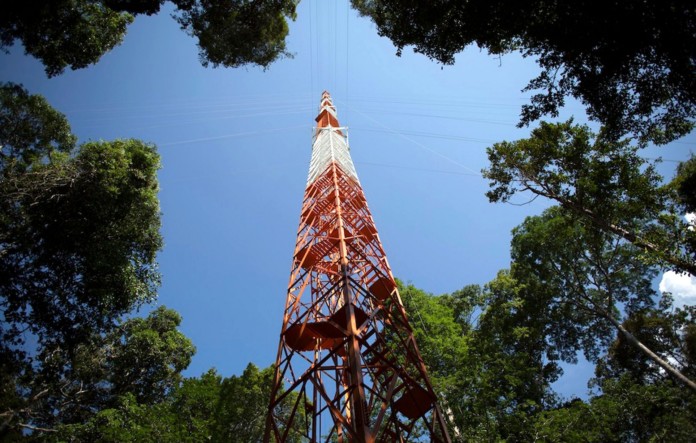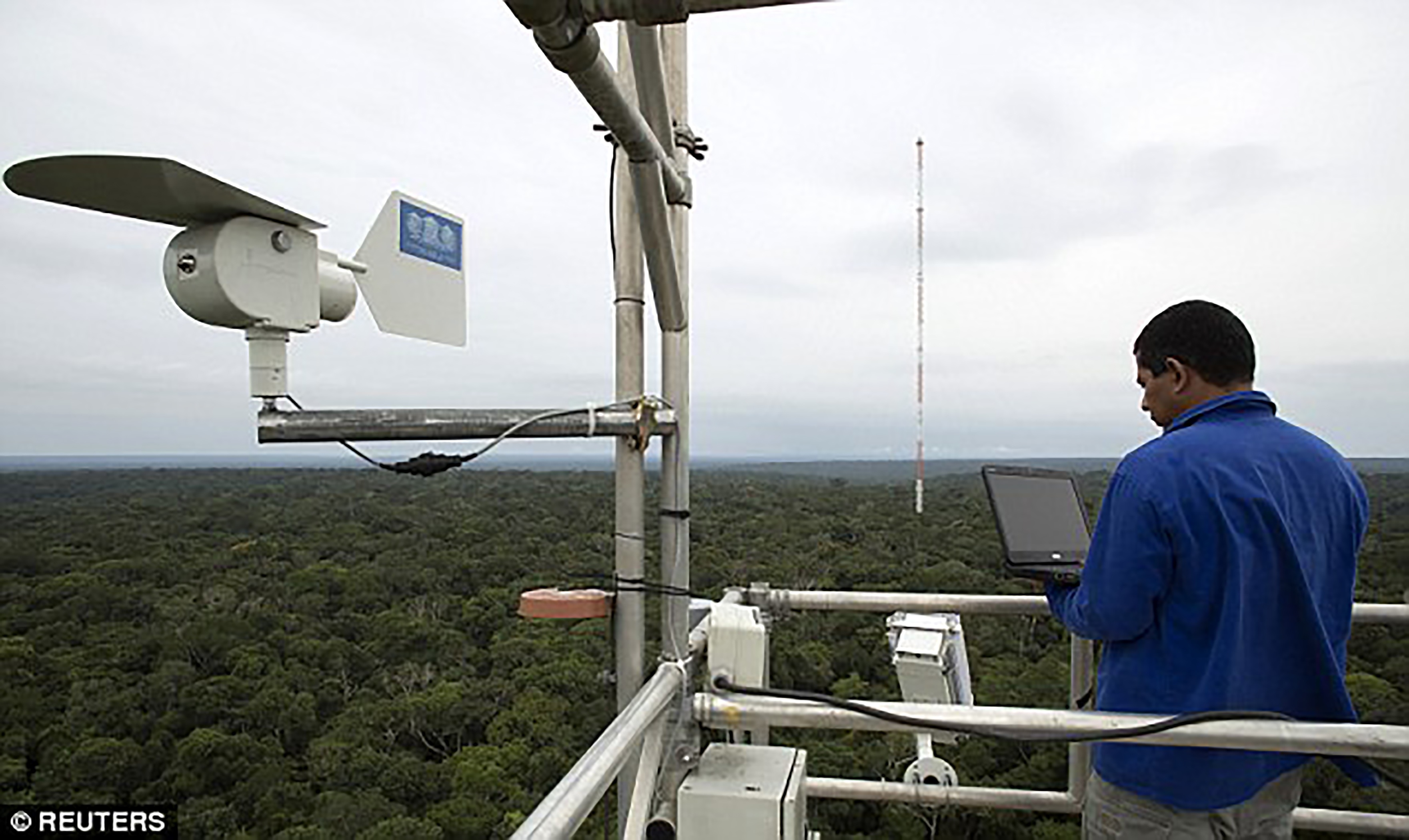At 1,066 feet — three feet higher than the Eiffel Tower — it’s the tallest structure in South America. It’s also the centerpiece of a three-tower scientific complex called ATTO — 150 miles northeast of the Amazon River’s largest city, Manaus.
When fully outfitted, ATTO’s trio of towers will bristle with gas sniffers, particulate collectors, light sensors and scores of other instruments that continuously will watch over the forest — and the air above it — for at least the next two to three decades.
The Brazilian and German scientists overseeing research at ATTO say that the data collected by these instruments will provide an unprecedented portrait of the role that the Amazon jungle, the world’s largest rainforest, plays in the global carbon cycle — a key finding in an era of climate change. And by taking these measurements — including temperature, wind, greenhouse gases, ozone, radiation, visibility, tree canopy changes, soil temperatures and soil gas fluxes — scientists will be able to track how global warming is affecting the Amazon, particularly its ability to absorb carbon.
Two shorter, 260-foot towers, several hundred yards from the Tall Tower, have been measuring gases and other components of the atmosphere since 2010, as well as studying how the fine droplets, gases and tiny particles released by forest vegetation, agricultural fires and pollution from distant cities contribute to the formation of clouds and rainfall in the Amazon.
The Amazon, a region nearly the size of the U.S., is by far the largest rainforest on earth. Biologists have warned for decades that its prodigious biodiversity was threatened by logging.
But more recently, climate scientists have become concerned that global warming also may pose a danger to the forest, possibly by shifting oceanic and atmospheric currents in ways that could lead to a pronounced drying of the Amazon. A study last year suggested that tree mortality in the vast rainforest, possibly related to changing weather patterns, is already reducing its ability to sequester carbon. Before scientists can forecast the fate of the Amazon, they need a more sophisticated grasp of how the forest interacts with the atmosphere. If the Amazon does act as a net sink today, scientists want to know and for how long it will continue to do so.
Beginning in the late 1990s, researchers at the United Kingdom’s Met Office published a series of worrisome papers on the prospects for Amazonia in a warming world. Using computer models that link climate and vegetation, they found that by altering atmospheric circulation over the Atlantic Ocean, global warming could dry out much of the Amazon basin. They said that much of the forest could turn into savannah, putting at risk the region’s rich flora and fauna, and releasing vast quantities of carbon dioxide.
Newer studies have cast doubt on this cataclysmic scenario, saying that while the Amazon may not continue to support its current lush vegetation, some form of forest would remain. ATTO will play an important role in studying these questions.
The complex was funded jointly by the Brazilian and German governments, each of which contributed half of the $9.5 million cost of building and running it for the next several years. Germany’s Max Planck Institute for Chemistry and several Brazilian research institutions, including the National Institute of Space Research and the National Institute for Amazonian Research, oversee the project.
About 50 Brazilian and 50 German researchers are already at work on a dozen experiments using the shorter towers, enduring the heat, humidity and occasional threats from snakes or jaguars.











